Kvass is a Slavic and Baltic traditional fermented drink that originates in eastern Europe.
Usually it's made of beets and stale black or rye bread with the addition of sugar. The traditional recipe contains sugar or honey, when in modern recipes it usually contains salt.
Kvass is full of iron, potassium, copper and B12.
It can contain small amounts of alcohol.
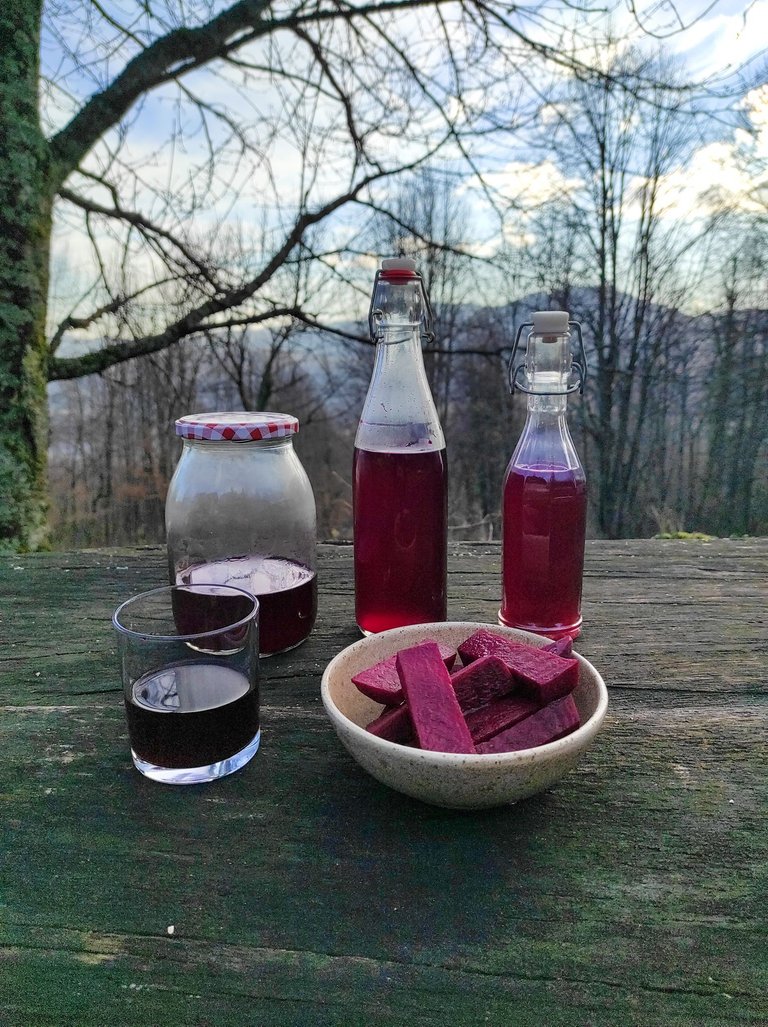
Kvass is super-simple to make and to make it a bit more interesting, I tried to trap some carbonation.
Kvass contains probiotic microorganisms that can help improve our gut health, but too much of it can cause diarrhea or irritable bowel.
Kvass shouldn't be consumed by people following a reduced-sodium diet.
According to the research, Kvass is safe for children.
There are dosages that we should follow:
- Starting with ⅛ cup for children and ¼ cup for adults.
- After a week an adult can rise the dosage to ½ cup and ⅙ cup for children.
- Adults can slowly raise the dosage for up to 1 cup per day.
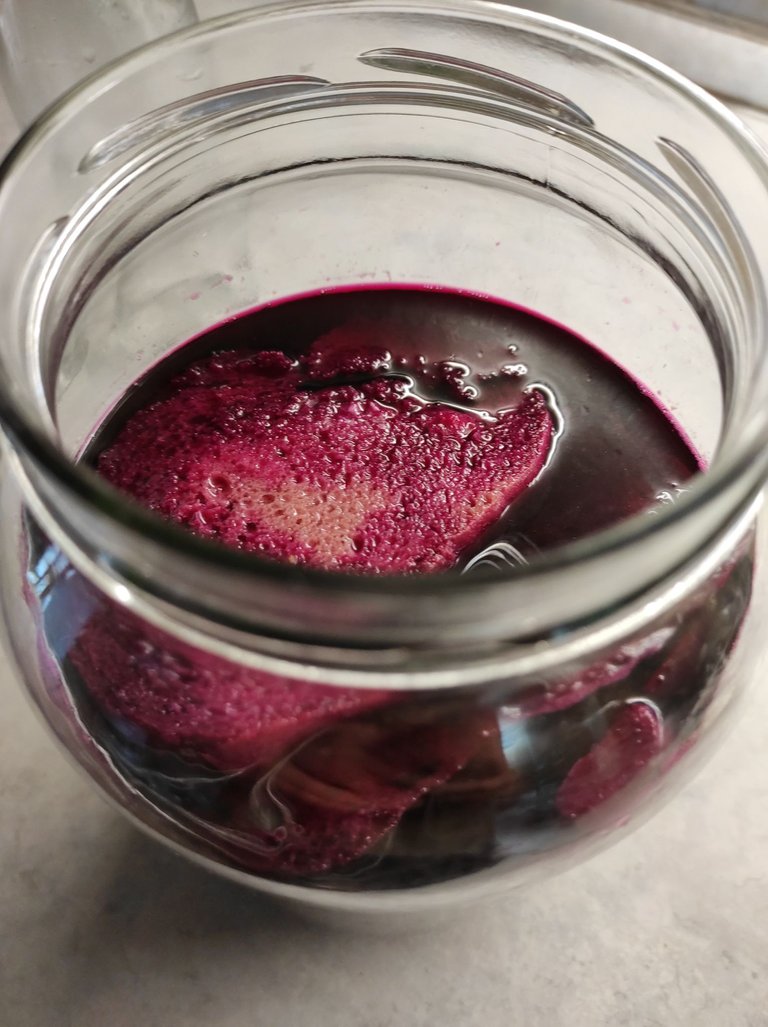
Benefits of drinking Kvass:
- increase absorption of nutrients
- improving gut health
- detoxing properties
- antioxidant
- beneficial to heart
- beneficial to liver
- improves brain function
- anti inflammatory
- protects against infectious disease
- providing electrolytes to the body
- boosts immune system
- improves blood pressure
- improves and balances our mood
- beneficial to skin
- helps regulating body weight
- can help with allergies
- can help preventing and fighting cancer
- can reduce risk of Alzheimer's and dementia
- the list is way longer...🙂
Ingredients:
- 2 large beetroots
- 2 pieces of stale black bread
- 4 tablespoons of sugar
- 1 tablespoon of sauerkraut brine
- 1,7 l of water
Preparation:
- Boil the water and cool it down to room temperature.
- Peel and cut beets into big pieces.

Place it in a big jar (or a few smaller ones). I'm using a 3 liter jar.
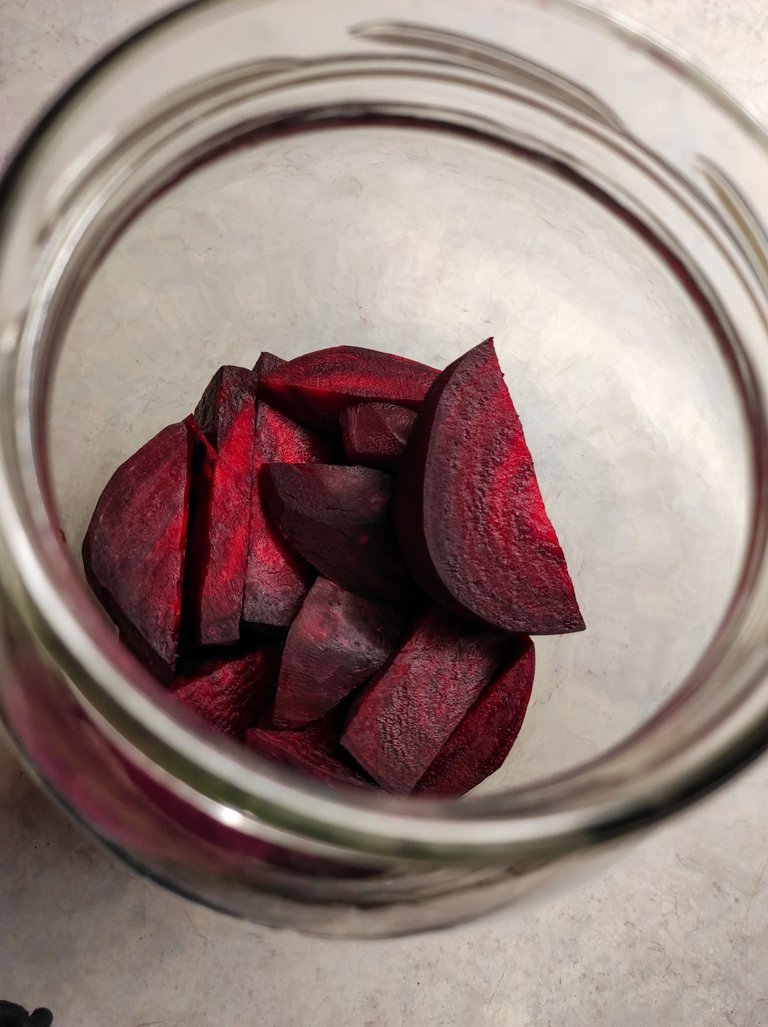
*I said in some of my previous posts that the jars need to be sterilized when fermenting, but I was wrong. A friend of mine told me that this is not necessary at all, the jar just needs to be well cleaned. - Add sugar in the jar.
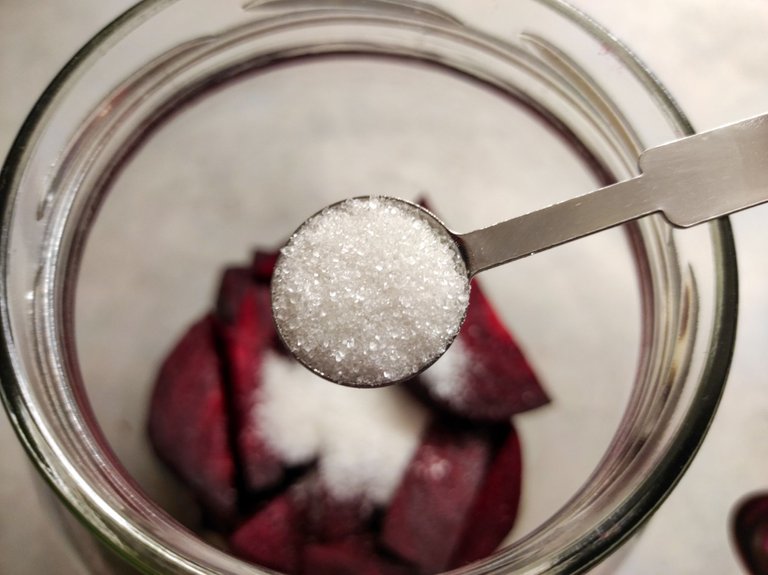
- Add tap water.
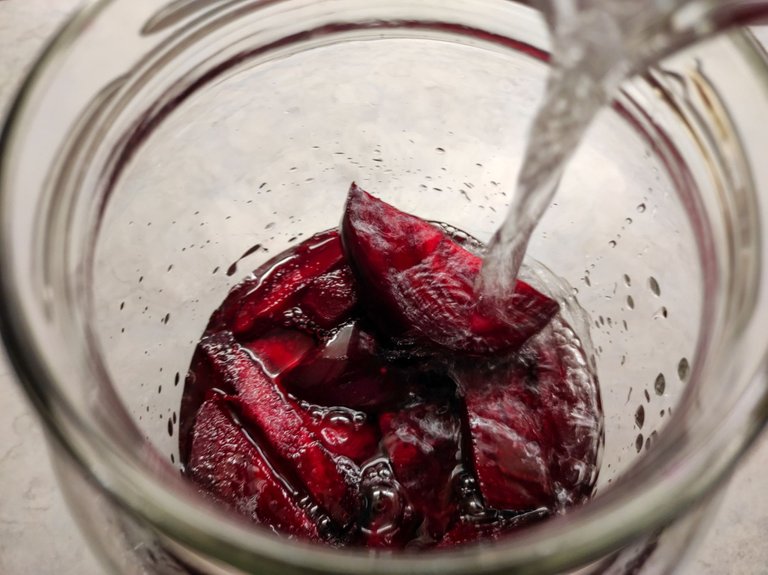
- Add sauerkraut brine, it will work as a probiotic culture starter.
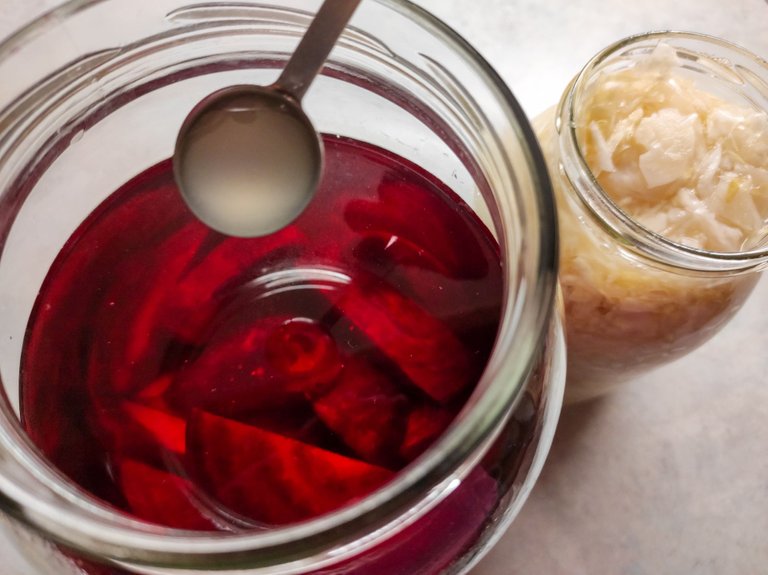
- Add stale bread (it can be any kind of bread you have).
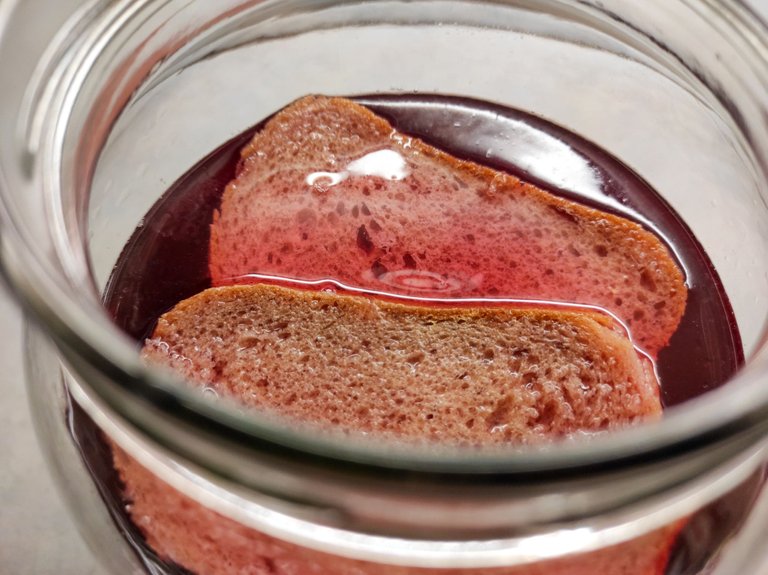
- Cover with a clean cloth and secure with a rope or a rubber band.
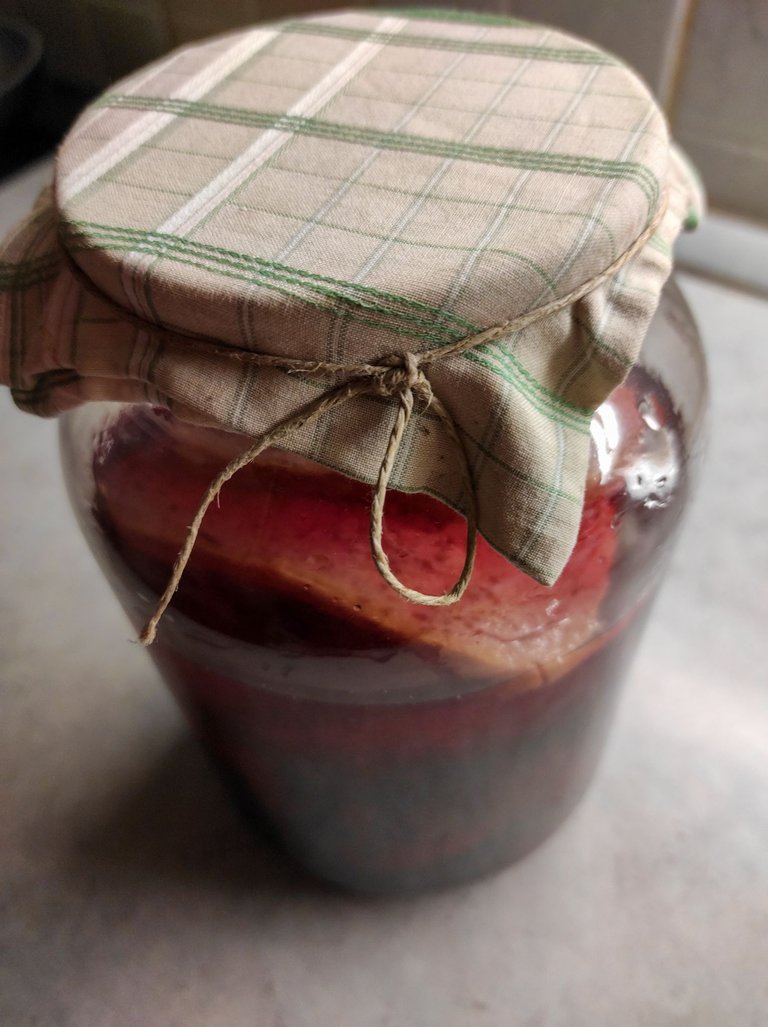
- Let it ferment for 3 to 14 days in a warm and dark place. I usually just cover it with a towel to make it dark and leave it on the kitchen counter. The taste will get more sour the longer it ferments. The time of fermentation depends on the temperature.
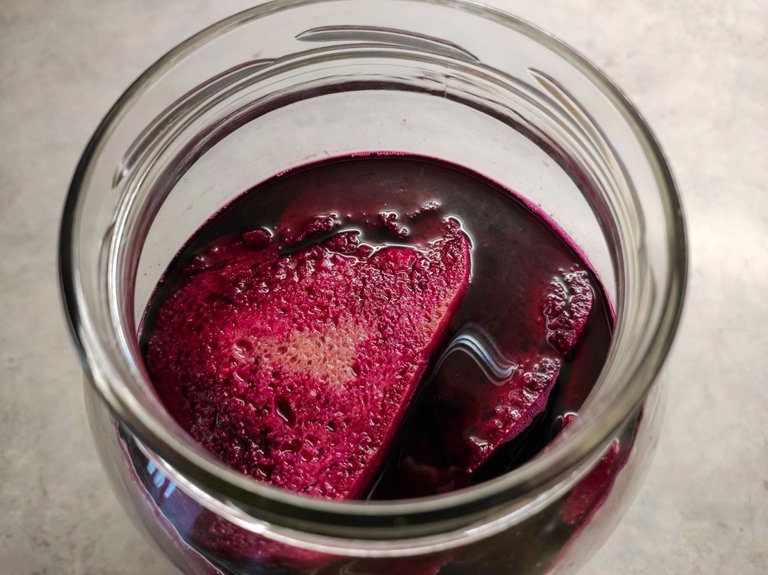
- After three days, strain it through a cheesecloth.
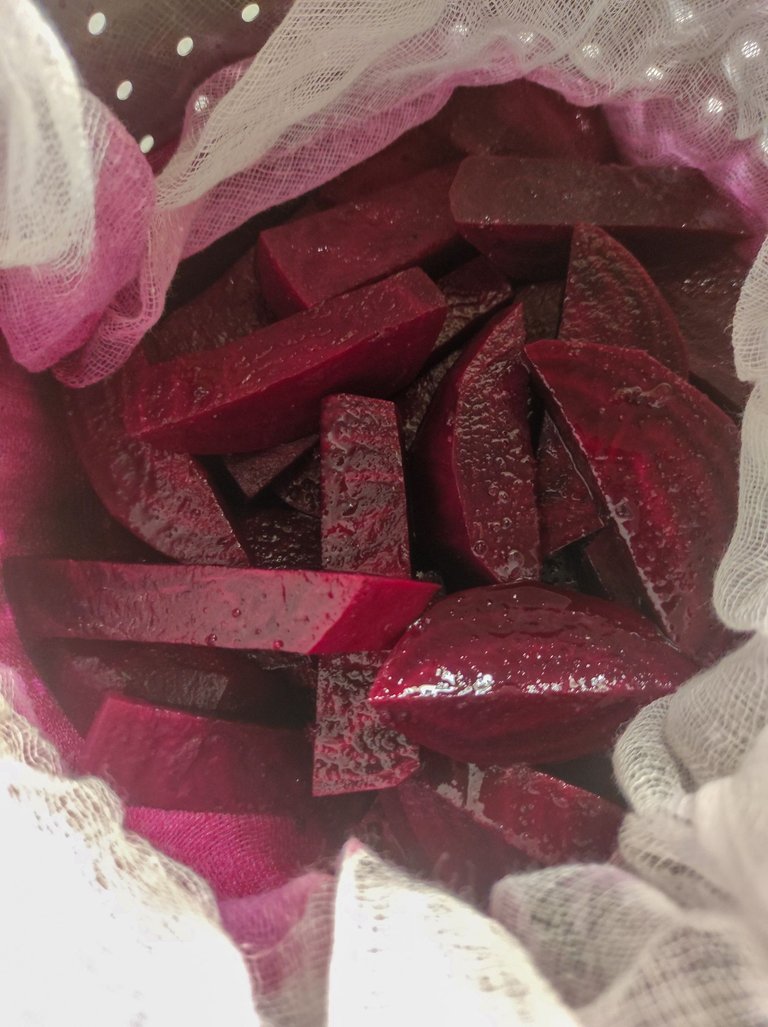
You can drink your Kvass after that. I love it just like that! It has a typical acidity of the lacto-fermentation and a strong earthy taste of beetroots. You can also ferment it for longer.
There is some leftover beetroot and we can eat it raw, cook it or make another batch of Kvass out of it.
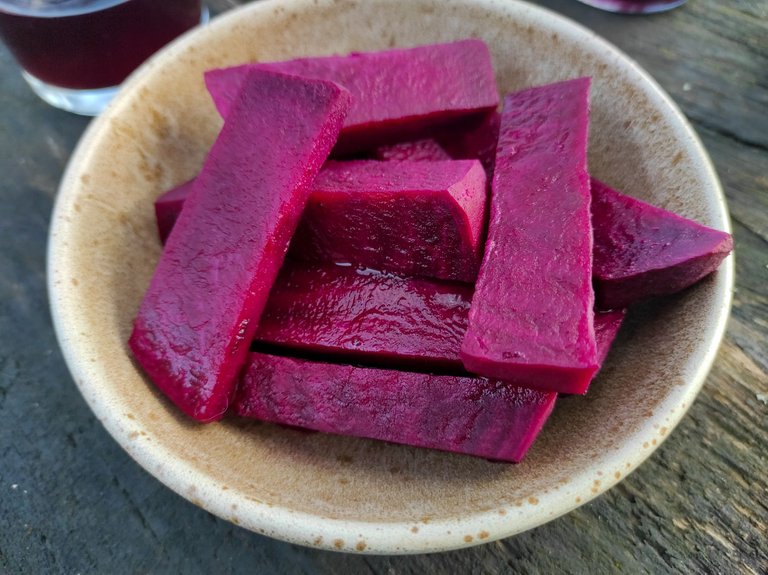
Some people make four batches out of it, but the taste reduces after. I like to use it for two and add some fresh beetroot the third time. - After fermentation, we can try to catch some carbonation in the fermentation bottles.
Pour Kvass into the clean bottles and lock them. I let it carbonate in a warm, dark place for three days.
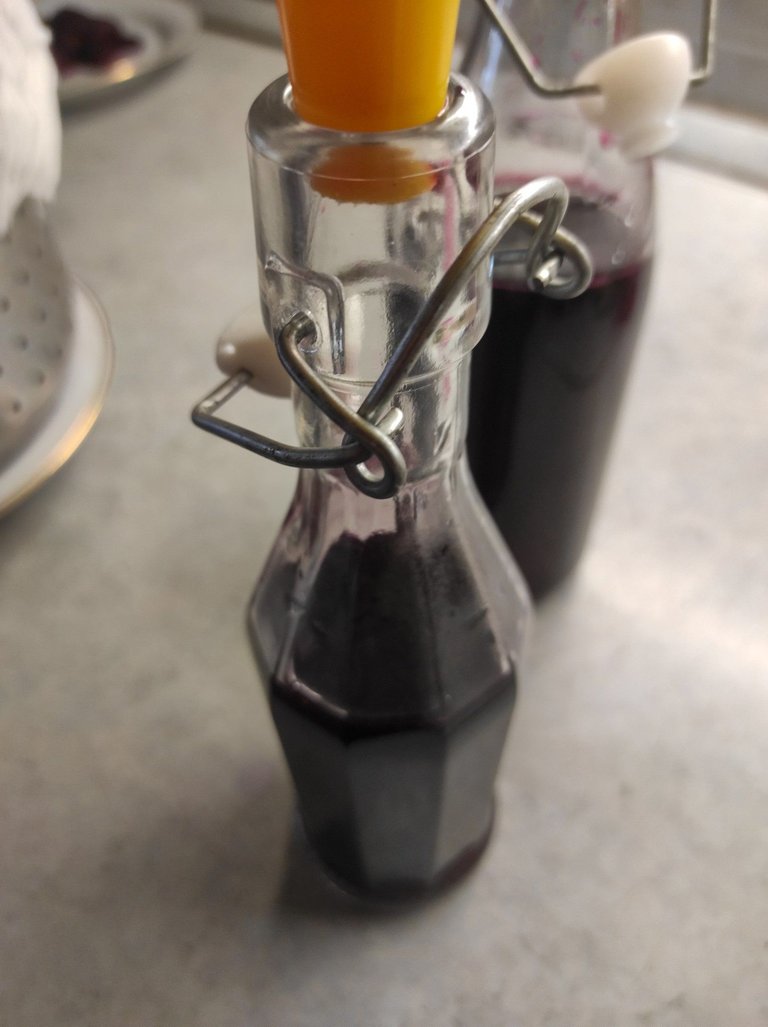
- After three days I opened the bottle and it and the bottle made a sound, similar to when opening a sparkling wine. There were some gasses that I could see escaping the bottle right after.
The taste of it changed a lot, it tasted less acidic and sweeter, the taste was a bit sharpened to the tongue. I could definitely feel some sparkling in my mouth and the drink reminds me more of juice at this point.
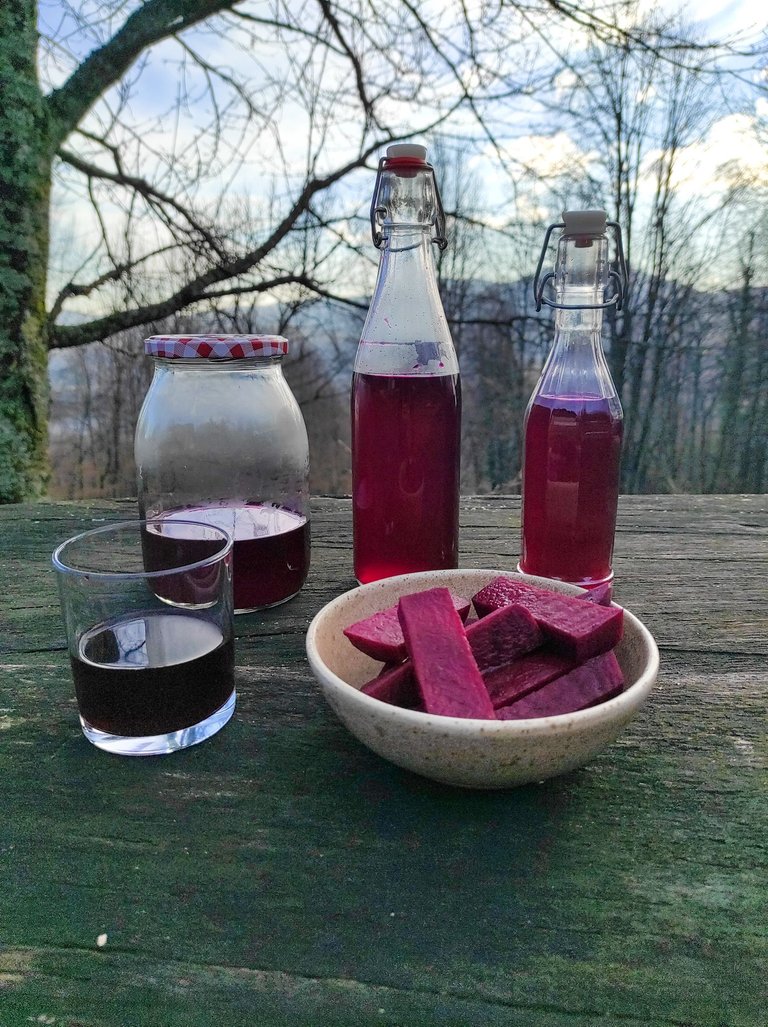
I'm sorry I took so long to get to this - Christmas is a busy time, isn't it? But boy - the colour of this definitely has a seasonal vibe! I've always wanted to make kvass, but every time I have, it's gone mouldy. Your post made me want to give it another go! @riverflows xx
You've been curated by @theherbalhive on behalf of The Herbal Hive.We support any content related to herbalism, from stories about your relationship with medicinal plants, to wildcrafting, foraging, ethnobotany, plant spirituality & herbs as nourishment, as well as the use of natural products to create medicines such as salves and tinctures. Use the tag #theherbalhive or post from our community!
Community II Delegate II Curation TrailII Discord
Christmas is a busy time and I guess it will get busier, as we're getting closer to it. 🙂🌟🍪
I like to add a bit of sauerkraut brine to start the right culture, I think that helps a lot.
Very nice post on making the kvass. I didn't know about the capping for carbonation.
I tried carbonation for the first time, it gets a funky taste after. I like it, but I still need to get used to the sharpness of it.
This is so interesting. It sounds a bit like kombucha. I am happy to know that the jars don't need to be boiled. That makes it simpler for an amateur like me.
Your surroundings are dreamy.
I really need to try kombucha, I've heard about it many times...
I'm really grateful to my friend that gave me this info. 🙂
It is dreamy up here...☺️☺️☺️
The rewards earned on this comment will go directly to the person sharing the post on Twitter as long as they are registered with @poshtoken. Sign up at https://hiveposh.com.
Your content has been voted as a part of Encouragement program. Keep up the good work!
Use Ecency daily to boost your growth on platform!
Support Ecency
Vote for new Proposal
Delegate HP and earn more